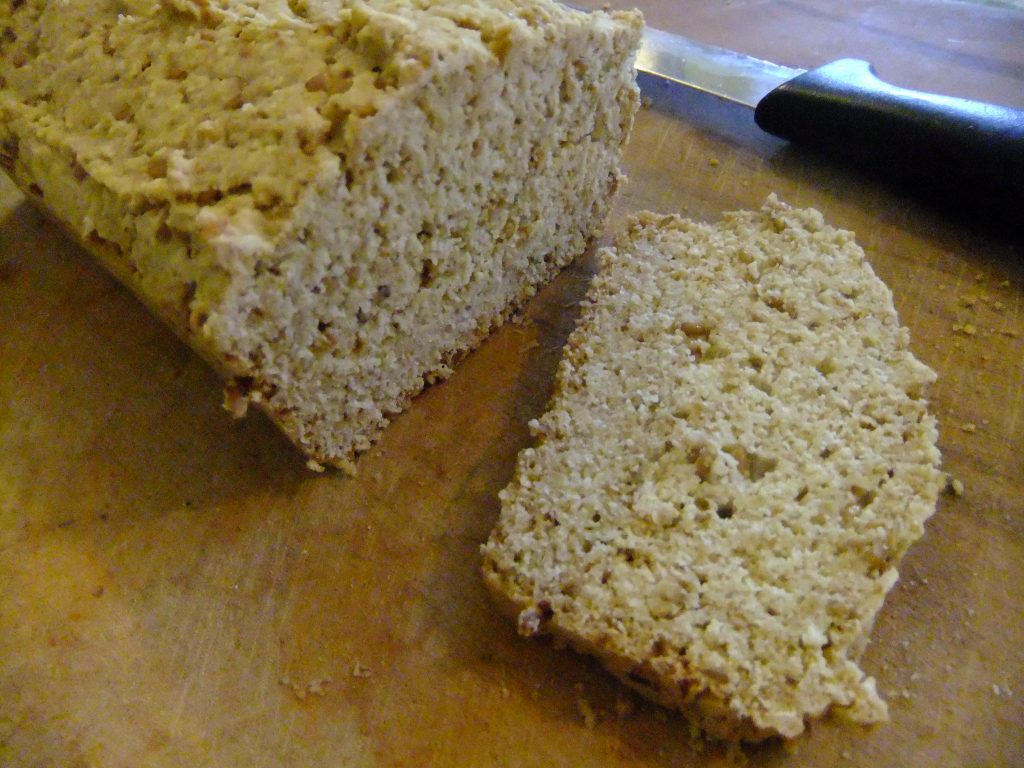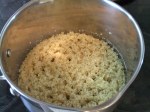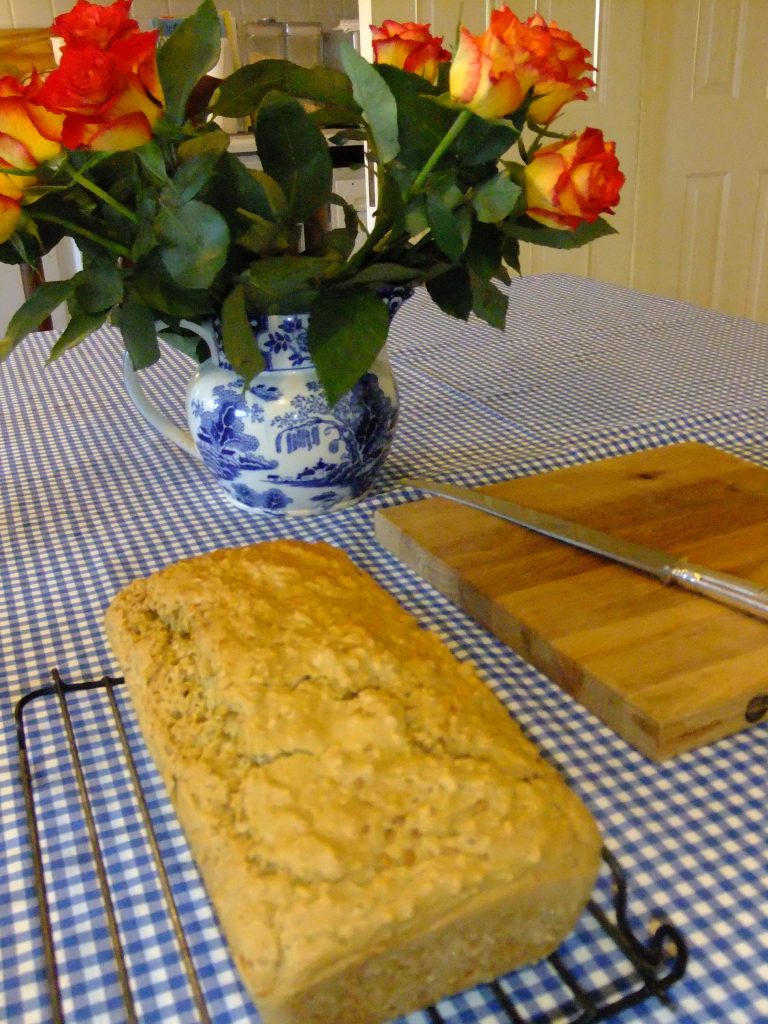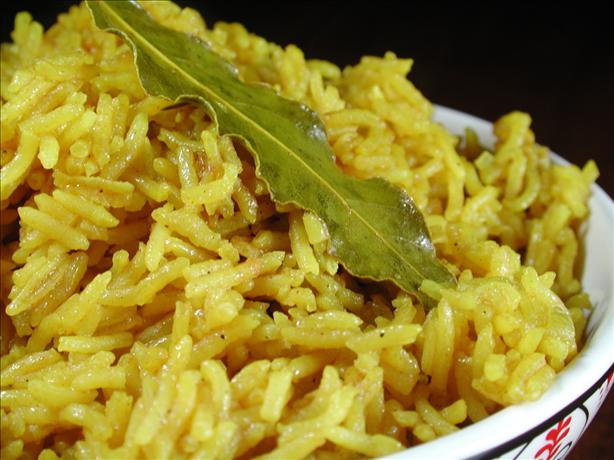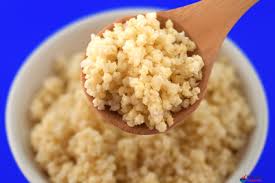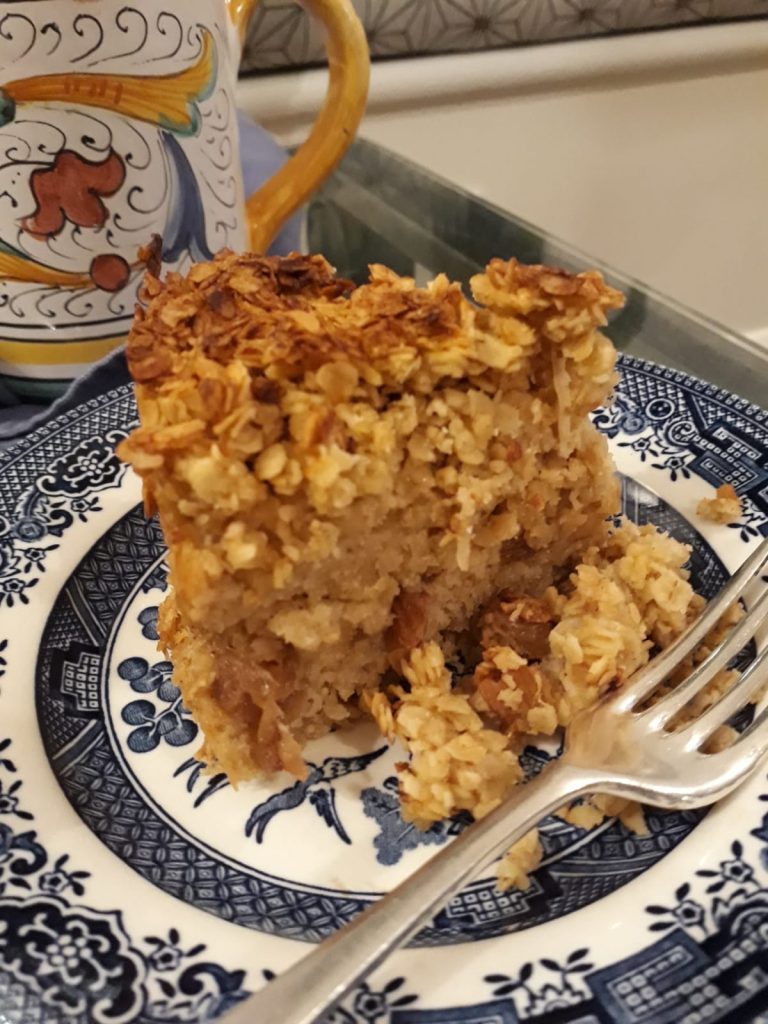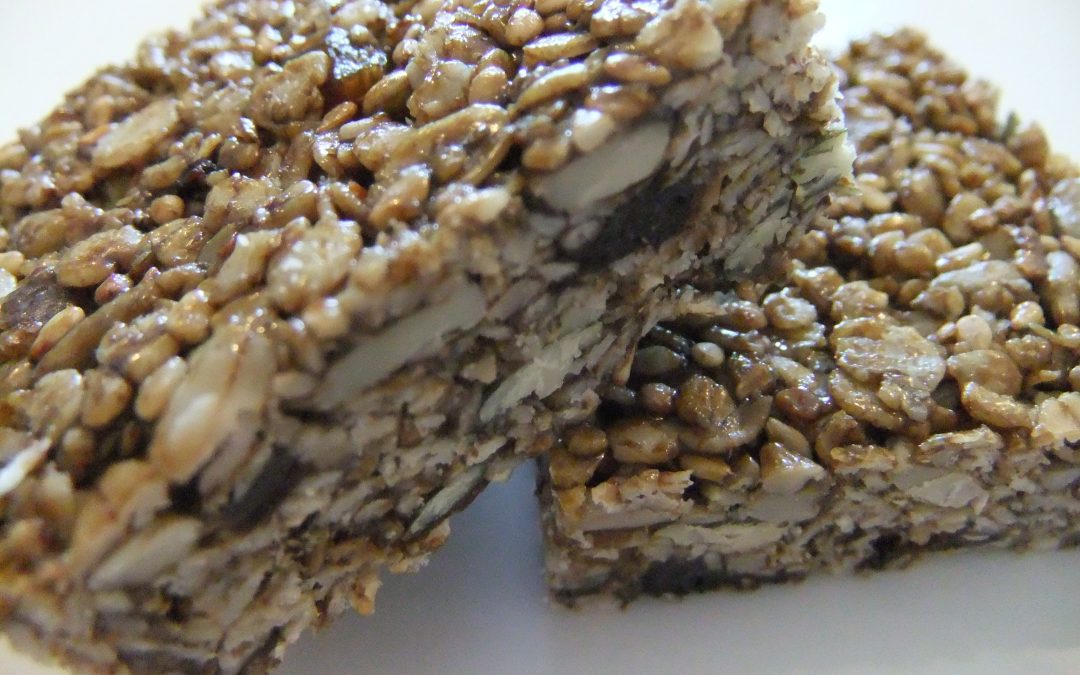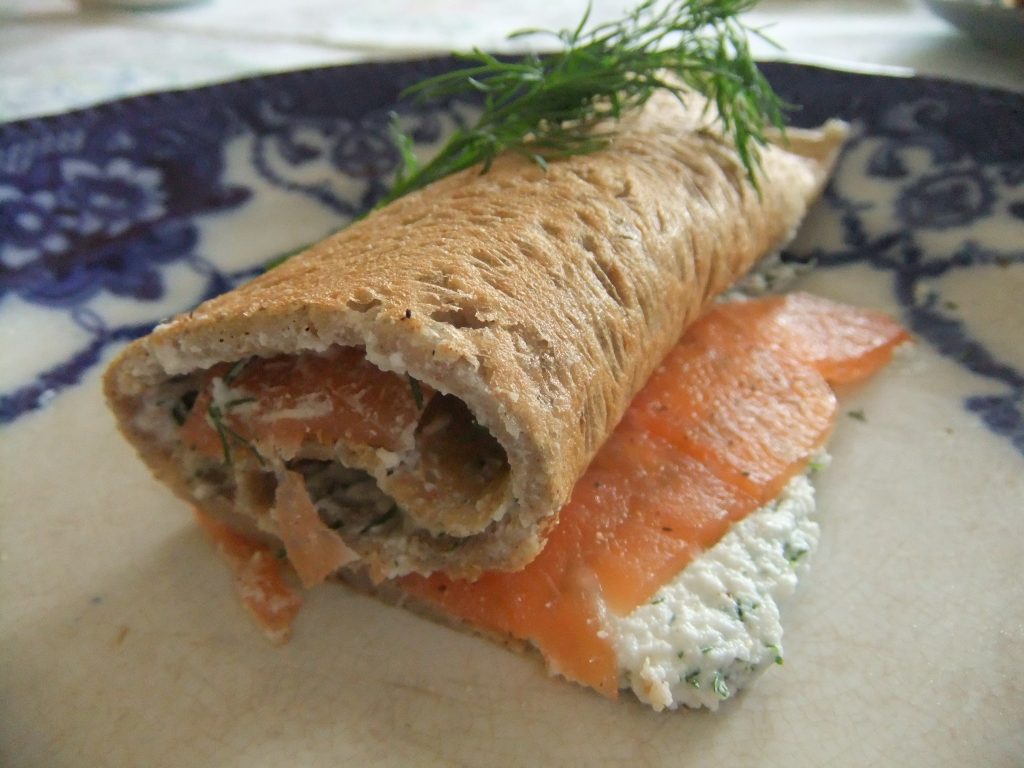
Oct 19, 2015 | Anna's Best Recipes, Breads, crackers, pancakes & wraps
This is delicious and I think it tastes very like traditional brown soda bread and thankyou to the patient who gave me the recipe. Without something extra to bind it I do find it a little crumbly. If this is too annoying (I don’t mind this) you can add a large egg to the mixture to bind it, or alternatively a vegan “flax egg” (1 tbs ground flax seeds mixed with 3 tbs water). I also line the bottom of the loaf tin with silicon/baking paper (and grease this too) just in case it should stick.
1 large tub of organic natural yogurt (400 ml or 500g) or home made kefir (or dairy free versions: unsweetened soya or almond yoghurt)
2 tubs (about 800ml) gluten-free porridge oats (use the yogurt tub that you just emptied) or if you eat gluten, normal porridge oats
2 rounded tsp of baking soda
2 tbsp of extra virgin olive oil
To bind (optional) 1 large egg, beaten or 1 tablespoon ground flax see or chia seed mixed with 3 tbs water
A handful of porridge oats or poppy seeds for sprinkling on top
1. Preheat your oven to 180C (fan) or 195C (non-fan)
2. Get a big bowl and mix all of your ingredients gently but thoroughly
3. Grease a 2lb (900g) loaf tin with olive oil and line base with greaseproof/silicon paper if using
4. Pour your mix into the loaf tin and spread to flatten the top a bit
5. Put in the oven for 45 mins (at about 15mins, sprinkle some porridge oats or the seeds on top)
6. Take it out and carefully remove from loaf tin
If you really want crispy edges to the bread, put it back in the oven for 5 minutes.
Why this is better for you
Oats are packed with soluble fibre which feeds beneficial bacteria in your gut as well as helping you feel fuller for longer. Oats are naturally lower in sugars than wheat. Wheat (even wholemeal) contains amylopectin which can be fuel cravings and binges. Oats are also far easier to digest because they do not contain gliadin gluten or irritating wheat bran, which can make digestive issues flare up. Natural yoghurt is a much better binder for bread than the refined vegetable oils in a lot of shop bought breads. Refined oils interfere with energy production and cause inflammatory in your body – e.g. in your digestive system or your skin. Other grains such as millet and buckwheat are also healthy choices for making bread. Many people who are sensitive to dairy (milk products) can take kefir. This is because the kefir organisms hydrolyse (break down) casein, the problematic protein in milk. Kefir is also low in lactose because it is digested and turned into lactic acid (hence the tangy, yoghurty taste). Shop bought yoghurt is not usually totally lactose free as the fermentation is not allowed to be completed.

Mar 26, 2014 | Anna's Best Recipes, Sides, starters, soups & snacks
Quinoa is technically not a grain but a seed and is seriously easy to cook. It’s really rich in protein at a whopping 14% so will keep you fuller longer. Make sure to buy whole quinoa grains, not quinoa flakes or flour. If you (or your kids) struggle to like new tastes, stir in something strong-tasting and familiar (like basil pesto or tomato sauce) prior to serving for the first time. For a really simple meal, I sometimes cook enough quinoa and when its done but still hot, stir in a drained rinsed tin of chickpeas, a couple of spoons of dairy-free basil/sundried tomato pesto, and some chopped rocket or baby spinach leaves, a little chopped red onion, a clove of crushed garlic and lots of extra virgin olive oil. This makes a gorgeous warm salad and is lovely cold too (e.g. in lunchboxes). Simple cooked quinoa with pesto would make a great after-school snack…
For 3 servings (as an accompaniment)
150g (about 3/4 mug) whole quinoa grains
310ml (about 1 1/2 mugs) boiling water
- Put your quinoa into a saucepan. Add the boiling water and cook, covered with a lid or a plate, for about 10 mins. No need to stir. Remember never to cook quinoa in cold water if you want it to be fluffy and delicious.
- The grains are done when you can see little steam holes in the surface, the water will be absorbed and you can see little curly white lines at the edges of the grains. If not all the water has been absorbed, turn off the heat, replace the lid and leave for 5 minutes to fluff up.

Cooked quinoa
Why this is good for you
Quinoa is rich in essential vitamins and minerals as well as protein so its a pretty good all round food. It’s a great one to introduce to your kids if you struggle to get them to eat enough protein (eg. meat, fish, eggs, beans) instead of just pasta and bread all the time. Because quinoa is so high in protein it does not cause the sharp spikes and troughs in blood sugar that so often contribute to energy problems, hyperactivity and concentration difficulties. It’s also rich in magnesium which you need for keeping chilled out, and potassium which you need for good thyroid function, energy and mood. Its also high in folic acid, betaine and choline, which are fantastic for your brain health. Buy organic if you can, as it contains higher levels of essential minerals due to not being exposed to the pesticide glyphosphate (roundup) (see my April 2014 newsletter, shortly to be posted on www.annacollins.ie)

Mar 12, 2014 | Anna's Best Recipes, Breads, crackers, pancakes & wraps
This is a lovely, very white-looking bread that’s still made with wholegrain rice and quinoa flour. I adapted this from a Dove’s Farm recipe and was hard pressed to stop eating it last night with my buttery spread for bread (see blog). It’s 100% gluten-free, egg-free and dairy-free. Using quinoa flour in this recipe (instead of just rice flour) helps keep you fuller longer. This is because quinoa (pronounced “keen-wa”) is really a seed and not a grain. Quinoa is rich in protein (a whopping 14g per 100g!). If you are catering for fussy tastes which have not tried quinoa before, try omitting the quinoa and substituting with brown rice flour. The next time you make it, add a little quinoa flour, and keep going until you are up to 50% quinoa. The bread will be very sweet made with rice flour only, as rice is naturally very high in sugars.
Makes 1 large (1kg) loaf
1kg loaf tin (a standard loaf tin), oiled and (if you have some greaseproof or silicon paper) bottom-lined
Tinfoil
550ml warm water
2 level tsp honey (this is essential, otherwise the yeast won’t come alive)
2 rounded tsp quick yeast
250g quinoa flour, organic if possible
250g brown rice flour, organic if possible
2 tsp xanthan gum
1 scant level tsp Himalayan or Atlantic sea salt (or omit completely)
3 tbsp oil: virgin macadamia oil or (if you cant get this) olive oil
- In a jug or bowl mix the warm water, honey and quick yeast
- Into a separate, large bowl sieve the rice flour, quinoa flour, xanthan gum and salt, if using.
- Beat in the yeast liquid and the oil and beat until well mixed.
- Pour into tin, smooth the top and leave to rise in a warm place for 90 minutes. I put a small chopping board on top of a warm radiator for this and balance the tin on top of this, which seems to rise the dough really well.
- Cover the tin with oiled tinfoil. After around 75 minutes, turn your oven on to 220C/200 C fan.
- Bake in the preheated oven for 50-60 minutes, until a needle inserted into the centre of the bread comes out clean.
Why this is better for you
Brown rice and quinoa are whole foods (they have not been refined). So they’re higher in minerals and vitamins than their white counterparts. That said, all grains (especially rice) are still naturally high in sugars. That means if you want your meals to be vitality-boosting, it’s a good idea to keep bread (or other starchy foods, like potatoes) to no more than 1/4 of the meal!! Research shows that eating only small amounts of carbohydrates (eg. grains, root veg) with lots of veggies and moderate protein helps your body function better than if you live off mostly starchy foods. Because quinoa is high in protein and protein slows digestion, this bread will keep you fuller, longer, reducing the likelihood of energy dips, weight fain and stress due to fluctuating blood sugar.

Jan 22, 2014 | Anna's Best Recipes, Breads, crackers, pancakes & wraps
Since developing this recipe I’ve developed a simpler, yeast version that I find even more delicious (see super simple quinoa and rice yeast bread on this blog). But I’m leaving this recipe here in case you’re avoiding yeast. I developed this recipe as an alternative to the delicious (but horribly expensive) gluten-free quinoa bread by Artisan Bakery Originals. This is a lovely soft bread with a soft golden brown crust. It rises as well as any wheaten soda bread but has the gorgeous flavour of quinoa. You could use the mixture for scones too, spooning it into well-oiled muffin tins instead of a loaf tin and ajusting the cooking time. Slice up and freeze whatever you don’t eat within a day or two. Remember (if you are gluten-intolerant or coeliac) to use a separate toaster or grill from gluten-eaters for your bread to avoid being contaminated.
For one small (450g) loaf
325 ml generous 1½ cups unsweetened almond milk/coconut milk or (if you eat dairy) kefir or buttermilk
25g whole linseeds* (flax seeds), soaked for 2-3 hours/overnight in the milk above
75g potato flour
150g quinoa flour
75g quinoa flakes
1 rounded teaspoon xanthan gum
25g rice bran (or if you are OK with gluten you can use oat bran)
½ level tsp natural sea salt (eg. Atlantic/Maldon/Himalayan – other salts contain harmful additives)
1 rounded teaspoon aluminium–free bread soda
1 large egg, beaten
3 tbs extra virgin olive oil or macadamia oil
Tinfoil
1 small loaf tin (about 1250ml or 2 pint capacity)
1. Remember to soak the whole linseeds for 2-3 hours or overnight in the milk. This is crucial, otherwise the bread will not bind together and will fall apart.
2. Preheat oven to 190C or fan 175C
3. Grease and bottom-line a loaf tin with baking parchment/silicon paper
4. Sieve the flours, xanthan gum, salt and bread soda into a bowl, add the other dry ingredients and mix well.
5. Pour off a cupful of the buttermilk and reserve. Add the rest of the buttermilk with the flax (linseeds), oil and beaten egg to the dry ingredients.
6. Add enough of the reserved cupful of buttermilk to make a thick batter (sometimes the mix may take more liquid than at other times depending on the absorbency of the dry ingredients). The mixture should be soft enough to pour into the tin (a bit wetter than queen cake mixture).
7. Bake for about 1 hour. Test after 50 mins with a metal skewer to ensure that it is done in the middle (the skewer will come out clean if it is done). The bread will also shrink away a little from the sides of the tin when its done, like in this picture.

Bread shrinks slightly away from sides of tin when cooked
8. If the bread is getting too brown during baking, cover with a sheet tin foil.
9. Turn onto a wire tray to cool.
* although nut and seed oils are damaged by baking, whole linseeds seeds are too small for the body to break down and therefore they pass through the digestive system undigested. Therefore their (heat-damaged oils) are unlikely to be harmful because you cant digest them! The soluble fibre in the linseeds still does you good by providing food for your body’s beneficial bacteria. The fibre comes out of the intact seeds as a gel when you soak the seeds.
Why this bread is good for you:
Quinoa is packed with nutrients such as B vitamins and chromium. It’s also high in protein at 14g per 100g of the raw grain. This means quinoa is a great choice for a bread to help keep your blood sugar (and energy levels) even. Quinoa is easier on your digestive system than wheat. This is because wheat binds (inactivates) the beneficial, healing substance N-acetyl glucosamine (NAG) in our gut. So if you eat a lot of wheat, even wholewheat, for many decades you are more likely to have digestive issues e.g. gastritis, malabsorption, food intolerances, gastritis or bowel issues. Wheat also binds zinc and other minerals in your digestive system, making them hard to absorb. If you can afford to, buying the organic ingredients also makes sense as you are avoiding chemical residues. Wheat is sprayed with pesticides around 16 times (!!) between sowing and harvesting. Sadly, wholewheat, which contains nutrients, is the most likely to be contaminated of all the grains we commonly eat. Switching to a lower-grain diet, and using other (whole)grains, like quinoa, can make a great contribution to your health. High carb foods like grains (even quinoa) or potatoes should make up no more than a quarter of our adult diets if we want health and vitality.

Dec 12, 2013 | Anna's Best Recipes, Sides, starters, soups & snacks
This is a really easy reliable way to cook brown rice so it’s perfect every time. Here I use turmeric to give the rice a golden colour, meaning that you’re less likely to get objections if you are feeding fussy children (or partners) brown rice for the first time.
For 2 people (with protein and at least 2 servings of veg to accompany)
100g/half a mug of brown long grain rice or brown basmati (organic if possible)
275ml/1 mug boiling water
1/4 level teaspoon turmeric powder
- Measure out your rice into a small saucepan with a lid. Add the turmeric and boiling water, cover with the lid and bring to the boil on a medium heat. You want the whole thing to boil gently until cooked. DO NOT STIR.
- When the rice is done it will have soaked up all the water. This takes about 25 minutes for long grain and about 20 for basmati. Cooking times do vary depending on the hardness of your water. Adding salt or (salt-containing) stock cubes increases the cooking time. This is because salt lowers the boiling temperature of water, making it boil at less than 100C.
- When the rice is done, you can keep it warm for up to 20 minutes by simply taking off the heat and wrapping the whole saucepan in a towel. This will also help everything become more fluffy.Why this is better for you:
Brown rice contains more vitamins, minerals and fibre than white. This is because the outer layer of the grain contains most of the nutrients whereas the inside of the grain is composed mostly of (natural) sugars. When you eat a wholegrain, like brown rice, it comes with the vitamins and minerals needed for your body to benefit from it. By contrast, white rice is stripped of the nutrients your body needs to process it. The body takes vitamins and minerals from elsewhere, to help it deal with the nutrient-poor white rice. Let’s look at magnesium. This mineral is needed for good digestion, skin, mood and more. Deficiency can make you very stressed. 100 grams of cooked brown rice (about a cup) contains 110mg of magnesium whereas 100g of cooked white rice contains 11mg.

Sep 30, 2013 | Anna's Best Recipes, Sides, starters, soups & snacks
Wholegrain millet is an earthy tasting fluffy grain when cooked. It’s really cheap and is great for mopping up sauces/juices. Its a far healthier choice than couscous but looks really similar when cooked. Make sure to buy millet wholegrains instead of the flakes (which will become porridge!). Millet is naturally gluten-free and high in nutrients whereas couscous is made from white flour, low in nutrients.
Enough to feed 3 people as an accompaniment (NOT suitable for SC diet)
150g (about 3/4 mug) millet wholegrains
380ml (about 1½ mugs) boiling water
- Put your millet into a small saucepan. Add the boiling water and cook, covered, for 8-10 mins. No need to stir.
- The grains are done when you can see little steam holes in the surface, the water will be absorbed and it looks fluffy like couscous. Make sure you don’t put the millet in cold water or cook for too long or the result won’t be nice.
Variation:
After cooking, drizzle a little extra virgin olive oil on top of the millet, and sprinkle over some ground paprika. This looks lovely in a serving bowl. You could also sprinkle on some fresh coriander leaves.
Why this is good for you:
Millet grains are a rich source of magnesium and also of vitamin B17. Magnesium helps clear toxins from the body and also aids relaxation, helping you stay chilled under pressure. Its also great value. Vitamin B17 is a powerful nutrientwith action against cancer cells. Vitamin B17 is also found in many bitter tasting seeds such as those of apples, pears as well as bitter apricot kernals. Millet is an alkaline grain, which helps support bone density, joint health and vitality generally. An alkaline food is one that after the body has “burned” it for energy, leaves an alkaline residue. Fruits, vegetables, beans, pulses, millet, buckwheat and apple cider vinegar are alkaline whereas cheese, milk, wheat, meat, fish, and eggs are acidic. Acidic foods, when not balanced by alkaline ones, can cause skin, digestive, bone, joint, kidney and heart problems. Eating about 80% of your diet as alkaline foods is associated with a longer healthy lifespan.

Sep 25, 2013 | Anna's Best Recipes, Desserts & drinks
We continued to use our glut of cooking apples yesterday and ate this warm out of the oven. You could use eating apples (such as French golden delicious) instead of cookers, in which case you don’t need to sweeten the apples at all. If you have one, use a food processor to blitz the oats to make the crumble super-nice. If you don’t have one, use gluten-free oat flour from the health shop (if you can eat gluten, standard oat flour is fine). You can buy miniature food processors in Argos or department stores and save yourself time and effort.
For 6 people:
1 kg cooking apples
1 tbs water
20 drops stevia (or 2 rounded tbs xylitol)
Alternatively use 1kg sweet eating apples (e.g. French golden delicious) and omit the stevia/xylitol
Optional: handful of blackberries
Remember to check out my larder & shopping section for unusual ingredients
Crumble topping:
100g (1¼ cups) gluten-free porridge oats or gluten-free oat flour (or normal porridge oats/oat flour if you can eat gluten)
50g (1/2 cup) ground almonds
40g (3 level tbs) virgin coconut oil
1-2 rounded dsp xylitol (amount depends how sweet you like the topping)
1. Into a large saucepan put 1 tbs water and 20 drops of stevia (or the xylitol). Put on a low heat to warm while you peel and slice the apples into the pan. Stir around to make sure the stevia/xylitol is evenly distributed. Cover and cook gently for around 10 minutes until the apples are softened.
2. Preheat oven to 170C (for fan oven, for non-fan oven, 185C)
3. Meanwhile make the crumble. Blitz the porridge oats in the food processor or use the gluten-free oat flour. Tip into a bowl with the ground almonds, a dessertspoon of xylitol/coconut sugar and the coconut oil. Chop the coconut oil into the mix with a knife until it resembles breadcrumbs. Taste for sweetness and, if you like, add another dessertspoon of xylitol/coconut sugar and mix around.
4. Grease a 20x30cm pyrex dish or roasting tin – a bit smaller or larger won’t matter much but this size gives you a nice depth of dessert.
5. Empty the cooked apples into the dish and flatten with a spoon. Scatter the crumble evenly over the top.
6. Cook in the oven for around 30 minutes until slightly golden.
6. Serve on its own or with one of the following:
Dairy-free: natural coconut yoghurt (e.g. Abbot Kinneys or Coyo) sweetened with a few drops of vanilla extract
Dairy: a blob of Greek yoghurt
Variations:
- Instead of 100g oats you can use 50g gluten free oat flakes and 50g buckwheat flakes, all blitzed in the food processor to a coarse flour. If you are able to eat gluten, you can also buy oat flour in health stores and use this instead. NB. Unless certified gluten-free, oats are often contaminated with wheat (gluten).
- Add a pinch of ground cloves and a teaspoon of cinnamon to the apple mixture for extra health benefits and delicious fragrance
- You could also use coconut sugar instead of xylitol for extra caramel flavour and crunch – its delicious and contains some minerals.
Why this is better for you:
Apples, especially cooking apples, are a rich source of a soluble fibre called pectin. Soluble fibres like pectin feed beneficial bacteria in your gut. Pectin binds to harmful toxins (e.g. mercury from dental fillings and tune, or arsenic from non-organic rice) in the bowel. This makes them inert and aids their excretion. Oats also contain soluble fibre. Coconut oil is a rich source of medium chain triglycerides that help boost energy rather than being stored as body fat. Unlike most other oils, coconut oil is stable at high temperatures and so is safe to use in cooking. Using pure stevia (as herb) as your zero calorie sweetener for the apples is a 100% healthy form of sweetening. Xylitol is made from birch tree sap and causes fewer spikes in blood sugar than “normal” sugar or honey. I use xylitol for the crumble as stevia didn’t really seem to sweeten the topping enough when I experimented with it. Sweeteners such as xylitol, honey, coconut sugar, molasses and maple syrup are still not actively good for you though, so sweetened foods like this dessert are best kept for occasional treats not everyday eating

Sep 18, 2013 | Anna's Best Recipes, Cakes, biscuits & bars, Desserts & drinks
These are like a cross between a cake and a flapjack and are great for lunchboxes if you feel the need to put baked treats in. You can also eat them warm, topped with a dollop of natural coconut yoghurt or (for dairy) Greek sheep’s yoghurt with a few drops of vanilla extract stirred in. For these, I adapted Theodora Fitzgibbon’s apple flakemeal layer cake recipe into a traybake and swapped butter for virgin coconut oil.
Makes 16 squares
For unusual ingredients, see “larder & shopping”.
325g cooking apples
1 rounded tsp ground cinnamon
A generous pinch of nutmeg, if you have it
30g raisins
50g virgin coconut oil (or butter, if you eat dairy)
1½ rounded tbs rounded tbs honey
1 rounded dsp blackstrap molasses
175g gluten-free porridge oats (or normal if you eat gluten)
Grated rind of an organic lemon (if you cant get organic, scrub in hot water before using)
Juice ½ lemon
1 egg
- Turn on the oven to 180C (165C fan).
- Line a 20-20cm baking tray or brownie tin with greased baking paper.
- In a large saucepan on a very low heat gently melt the honey, molasses and coconut oil. A tip for getting the honey or molasses easily off the spoon is to heat the spoon first in a jug of boiling water.
- Meanwhile chop the raisins, peel and grate the apples and mix everything together with the lemon juice and rind. The antioxidants in the lemon prevent the apples turning brown. When the oil and honey mixture is melted, add the oats, cinnamon, nutmeg, apple mixture to the saucepan and mix to combine. Finally, beat the egg, add in and mix lightly.
- Turn the mixture into the prepared tin, even out and smooth down with a knife or spatula and bake, checking after about 20 minutes. It should take around 30 minutes and be only very slightly browned on top and at the edges. It will still be moist and a little springy to the touch.
Why this recipe is better for you:
Virgin coconut oil is a healthy oil rich in medium chain triglycerides that help increase energy levels in your body and brain rather than being stored as fat in your body. Cooking apples are a very rich source of pectin, which binds to toxic materials in the bowel until they can be eliminated safely. Both apples and oats contain soluble fibre which nourishes beneficial bacteria in the gut. Beneficial bacteria help support immunity, clear skin and regulate bowel function. Honey, molasses and almost all other sweeteners are still high in natural sugars so if you want the ideal diet, aim not to eat them more than a couple of times a week. For transitioning from a high sugar to a low sugar diet though, these are ideal. Molasses is high in iron and chromium so it does have some benefits as well as its lovely toffee flavour. Stevia is the only exception to this as it contains no sugars at all and is 100% healthy.

Sep 4, 2013 | Anna's Best Recipes, Cakes, biscuits & bars, Sides, starters, soups & snacks
I adapted this recipe by Xanthe Clay and the result was lovely – and easy to make. They are cooked in a frying pan rather than an oven, stick together really well and have a slight crunch. Unlike “normal” sugar, molasses is unrefined so still contains many nutrients. It has a sort of toffee flavour and can be a great choice for kids as it’s high in iron. Using the sunflower and pumpkin seeds raw at the end rather than toasting them on the pan will increase the nutritional value of the bars further but there will be a bit less crunch. Use organic ingredients where possible. Delicious as a snack or lunchbox filler.
Makes 24 small squares
25g gluten-free porridge oats* (or use normal porridge oats if you can eat gluten)
85g virgin coconut oil
55g sesame seeds
55g sunflower seeds
55g pumpkin seeds
85g dried chopped unsulphured* apricots, blueberries, raisins or sultanas
85g raw cane molasses
* Check out my “larder & shopping” section for where to buy all unusual ingredients
1. Line a baking tin around 27x18cm with silicone/baking paper cut to size
2. Heat a large frying pan and add the oats, sesame seeds, sunflower seeds and pumpkin seeds. Cook for about 10 minutes, stirring often at the beginning but more or less continuously toward the end to stop the mix burning. Its ready when you can hear the sesame seeds starting to pop and see the oats beginning to turn golden.
3. Tip into a ceramic or metal bowl or saucepan to cool and mix in the dried fruit.
4. Put the coconut oil with the molasses or honey in a saucepan. Heat the pan gently until the butter/coconut oil melts – do not allow to bubble.
5. Pour contents of the pan into the oat mixture. Stir until all the dry ingredients are well coated.
6. Tip the mix into the tin. Press down very firmly (it helps to put another sheet of non-stick parchment on tip). Allow to cool and then cut into 24 small squares or rectangles. Store in an airtight container for up to 10 days. After that, they tend to soften but can be firmed up by putting them on a baking sheet in the oven set to 160C and cooking for 15 minutes.
Why this is better for you:
If you are starting to convert your children (or yourself) from a high sugar diet then over time you can reduce the quantity of molasses or other sweetening you use in home baking. Cravings for very sweet foods are caused by mineral and vitamin deficiencies. As these are addressed, people start to be able to taste and enjoy foods which are less sweet. Oats are a much better choice than wheat if you want to avoid upsetting blood sugar balance as oat fibre slows digestion down, keeping you fuller for longer. Nuts/seeds also help delay the release of sugars (from grains, fruit and molasses) into the bloodstream. This helps balance blood sugar levels to help energy levels, brain function and immunity. This recipe is free of harmful refined vegetable oils. Virgin coconut oil is a useful source of medium chain triglycerides , that are used by the body directly to make energy instead of being stored as fat. The oils in the sesame seeds, although damaged by heating, cannot be absorbed by the body as whole sesame seeds are not digested (they are too small so pass through and out the other end intact!). As I mentioned before, you could avoid adding the pumpkin seeds and sunflower seeds until the end to boost the nutritional value of these bars further. Raw nuts and seeds contain beneficial omega 6 oils.

Aug 23, 2013 | Anna's Best Recipes, Breads, crackers, pancakes & wraps, Breakfasts & smoothies, Main courses
Ate these last Sunday for a late and leisurely breakfast. If you have ever successfully made ordinary pancakes, these will be a doddle for you. Buckwheat galettes are a traditional pancake made in Brittany and eaten with savory fillings. They are naturally gluten-free. If you want, you can store them in the fridge for 1 day, or freeze them for up to one month. When freezing, separate them with greaseproof or baking paper and store them in a self-seal bag to prevent drying out. To serve made-in-advance galettes hot, add one at a time to a dry frying pan, when the first side is hot, flip over. This recipe makes 4 large galettes. to make this a balanced lunch or dinner, simply add a large salad or steamed green vegetables drizzled with olive oil.
Buckwheat pancake with ricotta, dill & smoked salmon
For 2 piggy eaters (or 4 normal appetites!)
100g buckwheat flour (for unusual ingredients see larder section)
1 large egg, organic if possible
300ml/ ½ pint liquid – use 150ml/ ¼ pint each water and milk (rice milk, cows milk or soya milk or oat milk – NB oat milk may contain gluten) or use all water. See larder for further info.
A little virgin macadamia oil, coconut oil, or, if you can’t get these, some extra virgin olive oil
Freshly ground black pepper
100g smoked salmon, ideally wild or organic
1 small tub (150-200gg) buffalo or cow ricotta cheese (if you can’t get this, use low-fat cottage cheese, mashed or blitzed in a processor until smooth-ish in texture)
2 tbs chopped dill herb (a small bunch should be enough to yield this quantity)
1. Sift the flour into a large bowl.
2. Make a well in the middle and break in the egg and add a few grinds of black pepper.
3. Using a whisk, gradually add the liquid, whisking well, until the mix has the consistency of thin cream. Depending on the size of the egg, you may need a little more or less fluid than the quantity specified. Like all grain-based foods, buckwheat becomes more digestible if you leave it overnight to soak before cooking.
4. Heat a flat-based frying pan or griddle until hot, wiping a little oil over it with kitchen paper while it is still quite cool (macadamia oil, coconut oil, or extra virgin olive oil are fine)
5. When hot, pour a quarter of the mixture into the centre of the pan, tilting the pan to spread the mixture. Cook for a minute or two, until the pancake, begins to bubble around the edge. Flip it over with a spatula and continue cooking for another minute or two.
6. When the galette is cooked, turn it on to a plate, keep warm in the oven (covered with another plate to keep it all moist) and continue making more and piling them up.
9. To serve, mix the ricotta in a bowl with 2 tbs chopped fresh dill. Cut the salmon into strips and layout on a plate. Give each person a galette and allow them to add the cheese and fish and roll or fold before eating. Yum!
Variations:
Heat up some leftover chickpea curry, bean-based vegetarian curry, chili, or a casserole to use as a filling for these galettes.
Why this is good for you:
Buckwheat flour is a grain that is naturally gluten-free and is packed with nutrition. It is a valuable source of rutin, a bioflavonoid with anti-inflammatory and immune-balancing properties. Rutin, like many other bioflavonoids, helps support the integrity of your skin, making it stronger and less prone to allergic reactions. Ricotta is a cheese made from the watery whey skimmed off after making cheese. Because it is low in casein (the main milk protein that people can be intolerant to), its less likely to be a problem for those with a mild dairy intolerance. Smoked salmon is a high-quality protein that’s packed with essential omega 3 fats. The high protein content of this meal will keep you fuller longer.
